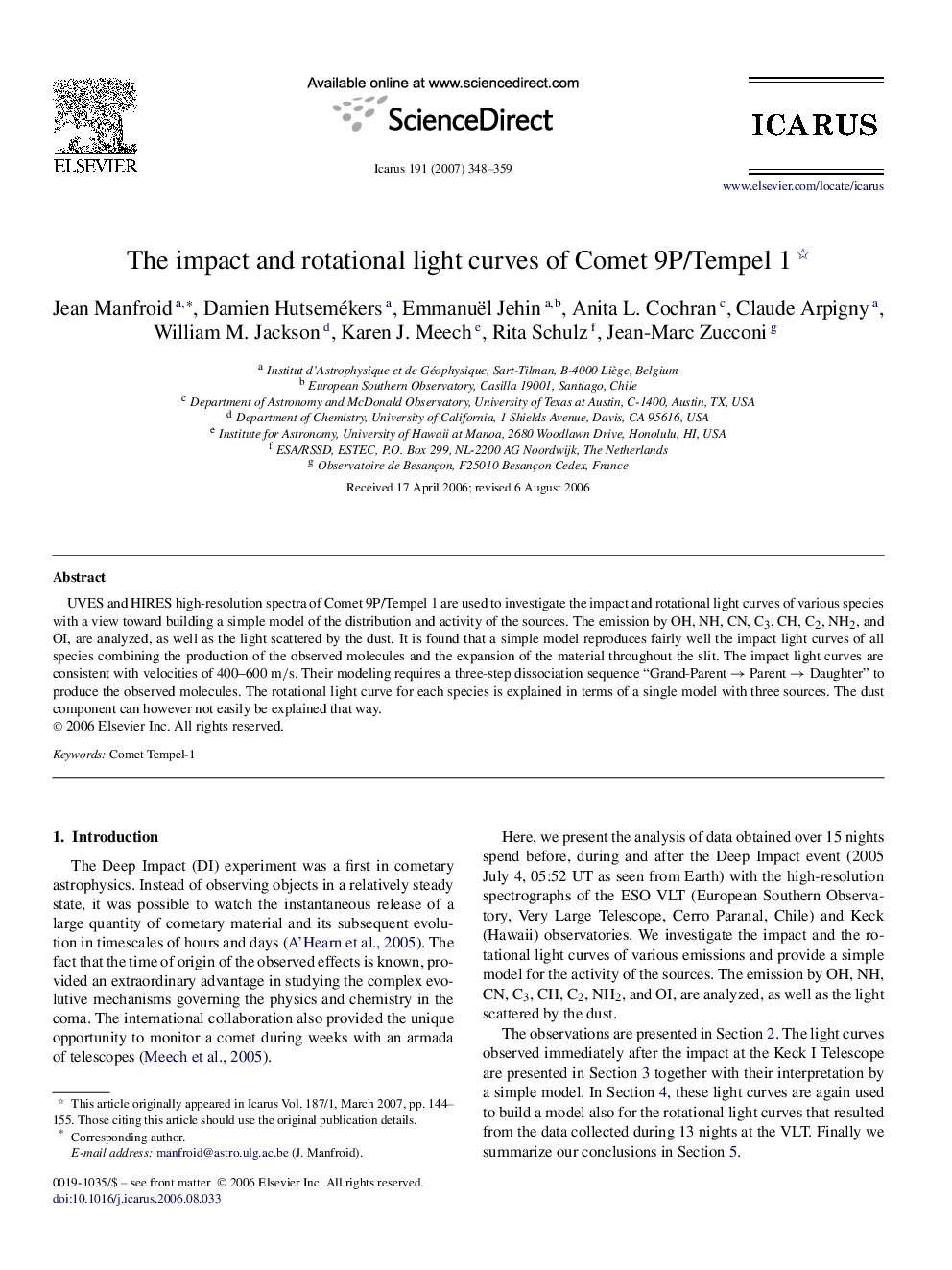| Article ID | Journal | Published Year | Pages | File Type |
|---|---|---|---|---|
| 1775258 | Icarus | 2007 | 12 Pages |
Abstract
UVES and HIRES high-resolution spectra of Comet 9P/Tempel 1 are used to investigate the impact and rotational light curves of various species with a view toward building a simple model of the distribution and activity of the sources. The emission by OH, NH, CN, C3, CH, C2, NH2, and OI, are analyzed, as well as the light scattered by the dust. It is found that a simple model reproduces fairly well the impact light curves of all species combining the production of the observed molecules and the expansion of the material throughout the slit. The impact light curves are consistent with velocities of 400-600 m/s. Their modeling requires a three-step dissociation sequence “Grand-Parent â Parent â Daughter” to produce the observed molecules. The rotational light curve for each species is explained in terms of a single model with three sources. The dust component can however not easily be explained that way.
Related Topics
Physical Sciences and Engineering
Earth and Planetary Sciences
Space and Planetary Science
Authors
Jean Manfroid, Damien Hutsemékers, Emmanuël Jehin, Anita L. Cochran, Claude Arpigny, William M. Jackson, Karen J. Meech, Rita Schulz, Jean-Marc Zucconi,
